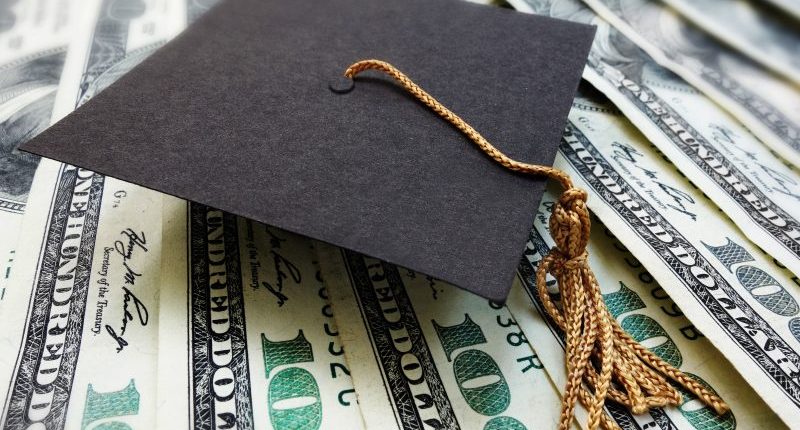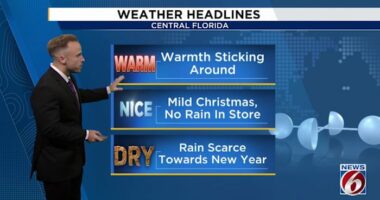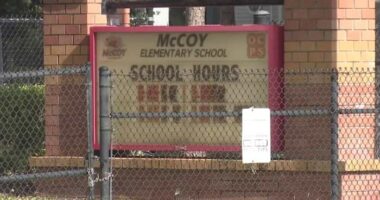Share this @internewscast.com

Congress is currently working through the specifics of President Trump’s “big, beautiful” budget bill, and it appears certain that whatever is approved will significantly impact student loans.
Both the version passed by the House and the one under consideration in the Senate propose several modifications to the federal student loan system, which Senate Republicans claim could reduce taxpayer costs by at least $300 billion.
A central feature of both plans: new caps limiting how much money people can borrow from the federal government to finance their education.
Some say the loan limits, specifically those on graduate school and parent borrowing, are long overdue.
“Numerous studies have indicated that colleges take advantage of these unlimited loans to inflate tuition costs,” noted Preston Cooper, a senior fellow at the conservative-leaning American Enterprise Institute, in a recent opinion piece.
- Man dressed as ‘Scooby Doo’ wanted for gas station robbery
But advocacy groups warn that Republicans’ proposed changes will make it harder for low-income students to afford college — and push more borrowers to private lenders, whose loans generally offer fewer protections.
Professional organizations like the American Medical Association have also raised concerns, saying the borrowing cap could deter qualified medical students and worsen the physician shortage.
Here’s what to know about the proposed caps on federal student loans.
What would the borrowing limits be for parents?
While the House and Senate proposals differ in details, both would limit how much parents can borrow through the federal Parent PLUS loan program to help pay for their children’s college.
Under the House plan, parents of undergraduates would be limited to borrowing $50,000 total, while the Senate plan would cap parent borrowing at $65,000 per student.
Currently, there is no limit, and parents can borrow up to the full cost of attendance.
Parent PLUS loans let families help pay for their children’s education without saddling the student with additional debt in their name. But they often come with less favorable loan terms and have caused many parents to sacrifice their financial stability to help their children.
In 2022, parents in more than 3.7 million families owed over $104 billion through the federal Parent PLUS loan program, according to the Century Foundation, a progressive think tank.
By the time a student completes their program, the median Parent PLUS debt burden carried by parents who used the loan is roughly $29,600, the report found.
After ten years, more than half of the original balance (55%) still remains, on average, per the Century Foundation.
What would the loan limit be for graduate students?
The legislation would cap the amount students can borrow for graduate school at a total of $100,000 for most master’s programs. For professional degrees, like law or medical school, the total cap would be $150,000 under the House plan or $200,000 under the Senate’s.
As it stands now, those students can borrow up to the full cost of attendance through Grad PLUS loans.
Cooper called the proposed maximums a “good start” in his op-ed and said they should help rein in “predatory” lending practices.
“Universities have used graduate loans as a cash cow to finance expensive master’s degree programs of dubious value, while many schools have foisted tens of thousands of dollars in parent loans on low-income families,” he wrote.
But the loan ceiling, along with other proposed changes, has also raised concerns.
“The potential impact of these student-loan changes would be to worsen a growing physician workforce shortage that is already making it difficult for people to access timely care in vast areas of the country, especially in high-demand specialties,” Dr. Bruce Scott, recent president of the American Medical Association, wrote earlier this month.
According to the Association of American Medical Colleges, the median cost of attending four years of medical school for the class of 2025 is $286,454 for public institutions and $390,848 for private schools.
Both totals are well above the proposed borrowing caps.
What about private student loans?
Nearly 43 million borrowers collectively owe $1.7 trillion in federal student loan debt. That amount represents more than 92% of all student loan debt, meaning roughly 8% is private, according to the Education Data Initiative.
Some worry that capping federal student loans will steer more borrowers to the private market, which often comes with higher costs and fewer protections.
“Students and parents will be forced to turn to expensive, high-risk private lenders — many of whom have a sordid history of exploiting borrowers,” the Century Foundation warned in a recent commentary.
The article pointed out that even though private student loans only account for 8% of debt, more than 40% of student-loan-related complaints submitted to the Consumer Financial Protection Bureau are about private loans.
Still, Senate Republicans argue that sweeping student loan changes — including borrowing caps — are needed to fix what many see as a broken system.
“American higher education has lost its purpose. Students are graduating with degrees that won’t get them a job and insurmountable debt that they can’t pay back,” U.S. Senator Bill Cassidy, R-La., said in a statement announcing the Senate plan earlier this month.
President Trump is urging Congress to pass the megabill by the Fourth of July, but federal lawmakers are still debating the details.














